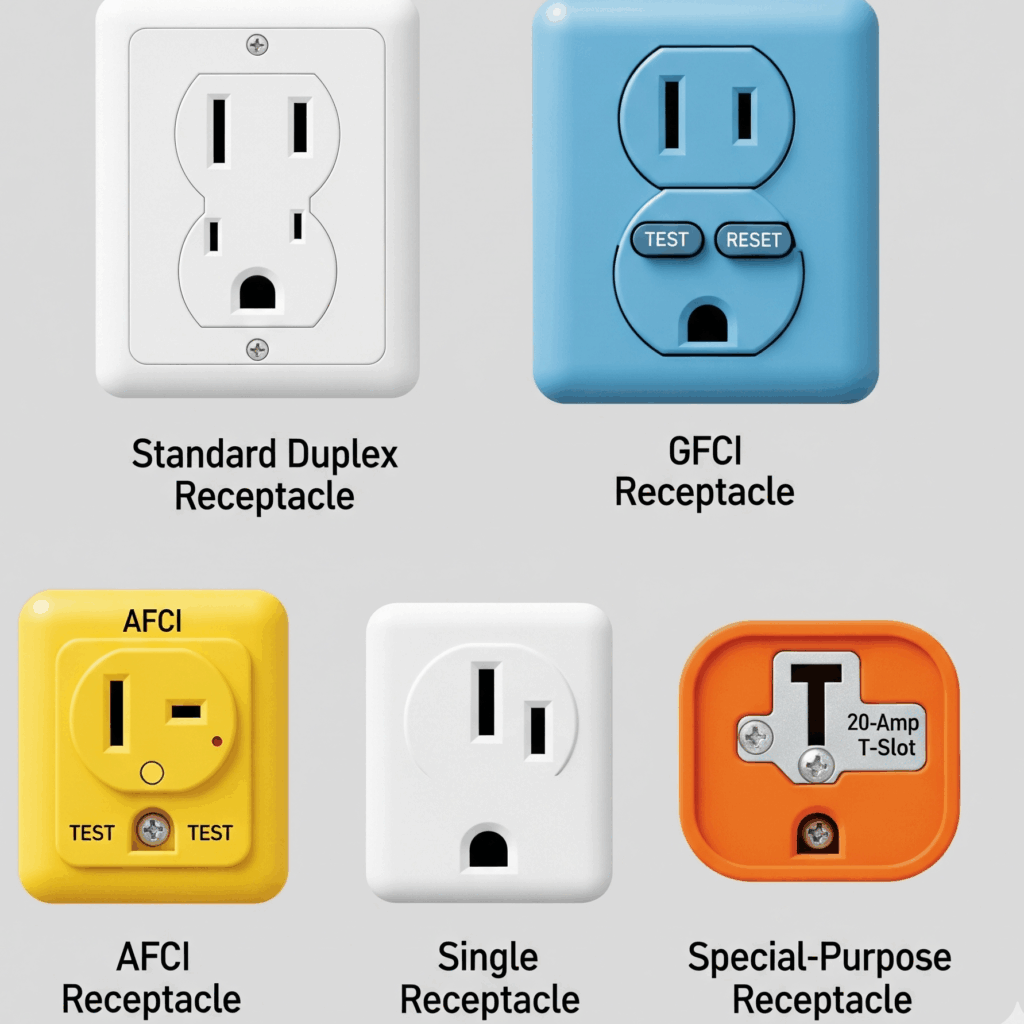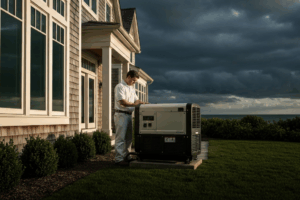How Do You Troubleshoot Electrical Receptacles?
Introduction
Electrical receptacles are critical components, connecting devices to the power supply. For electricians, efficiently troubleshooting receptacle issues is essential for safety and compliance with NFPA 70 (NEC) and NFPA 70E standards. This guide covers identifying and resolving common receptacle problems while ensuring safe, NEC-compliant practices.
What is an Electrical Receptacle?
A receptacle (outlet) is a device at an outlet box for connecting plugs to an electrical supply, ensuring safe power access in residential, commercial, and industrial settings (NEC Article 100).
Common Types of Receptacles
Duplex: Two outlets for multiple plugs (NEC 210.52).
GFCI: Protects against shocks in wet areas like bathrooms and kitchens (NEC 210.8).
AFCI: Prevents arc-fault fires (NEC 210.12).
Single: For dedicated appliances.
Special-Purpose: For high-voltage/amperage devices, often with surge protection.

How a Receptacle Works
A receptacle connects an electrical load to wiring via hot (black/red), neutral (white), and ground (bare/green) terminals. When plugged in, current flows from hot to neutral through the appliance, with the ground providing a fault path (NEC 250). Use a wire ampacity chart for safe wire sizing (NEC 310.15).
Installation and Safety Procedures
Follow NFPA 70 (NEC) for safe receptacle installation:
- De-energize: Confirm circuit is off using a voltage tester and lock-out/tag-out (LOTO) procedures (NFPA 70E 120.5).
- Prepare Box: Ensure a secure, clean electrical box (NEC 314.17).
- Strip Wires: Remove ½–¾ inch of insulation for terminal contact (NEC 110.14).
- Connect Wires: Ground to green screw, neutral to silver, hot to brass; follow GFCI line/load instructions.
- Secure: Fold wires without pinching, secure receptacle, and install faceplate.
- Test: Re-energize and verify functionality, including GFCI/AFCI test buttons.
How to Diagnose and Fix Electrical Receptacle Issues Like a Pro
Mastering the diagnosis and repair of electrical receptacle issues ensures NEC-compliant and safe systems. By addressing problems like power loss or tripping GFCIs per NFPA 70 and NFPA 70E, electricians deliver reliable solutions. Follow this guide for efficient troubleshooting.
Troubleshooting Common Receptacle Problems
Always de-energize circuits and follow NFPA 70E before inspecting:
- No Power
- Tripped Breaker/Fuse: Reset breaker or replace fuse (NEC 240).
- GFCI Tripped: Press “Reset”; re-tripping suggests a ground fault (NEC 210.8).
- Loose Connections: Tighten hot/neutral wires after de-energizing.
- Broken Wire: Rare; requires professional tools to investigate.
- Intermittent Power
- Loose Connections: Tighten wires at receptacle or panel.
- Worn Receptacle: Replace damaged receptacle.
- Scorched/Melted Receptacle
- Safety Alert: Overheating from loose connections/overload; de-energize immediately.
- Action: Replace receptacle, inspect wires, verify wire size with NEC ampacity chart (NEC 310.15).
- Receptacle Not Holding Plugs: Replace worn receptacle for secure contacts.
- Humming/Buzzing: Inspect loose wires or replace damaged receptacle.
- GFCI/AFCI Tripping
- GFCI: Test appliances or check wiring for ground faults (NEC 210.8).
- AFCI: Inspect for damaged insulation or loose connections (NEC 210.12).
Pro Tips
- Safety First: De-energize and use LOTO (NFPA 70E).
- Consult Experts: For complex issues (e.g., broken wires), hire a licensed electrician.
- Stay Compliant: Follow NEC for wire sizing and GFCI/AFCI requirements.
Safety Protocols
- Verify De-energized: Use non-contact and contact voltage testers (NFPA 70E 120.5).
- PPE: Wear insulated gloves, safety glasses, and flame-resistant clothing (NFPA 70E 130.7).
- Insulated Tools: Use tools designed for electrical work.
- Dry Environment: Avoid water contact.
- Ladders: Use stable, non-conductive ladders.
- Wire Sizing: Match wire to load using ampacity charts (NEC 310.15).
- Code Compliance: Adhere to NEC and local codes.
Conclusion
Troubleshooting receptacles is a core electrician skill. By mastering receptacle types, installation, and diagnosis while adhering to NFPA 70 and NFPA 70E, electricians ensure safe, reliable systems. Continuous learning and compliance maintain professionalism and safety.
Take the next step in your professional growth! Visit Expert CE (https://expertce.com/) for all your continuing education needs.
Continuing Education by State
Select your state to view board-approved continuing education courses and requirements:
Disclaimer: The information provided in this educational content has been prepared with care to reflect current regulatory requirements for continuing education. However, licensing rules and regulations can vary by state and are subject to change. While we strive for accuracy, ExpertCE cannot guarantee that all details are complete or up to date at the time of reading. For the most current and authoritative information, always refer directly to your state’s official licensing board or regulatory agency.



